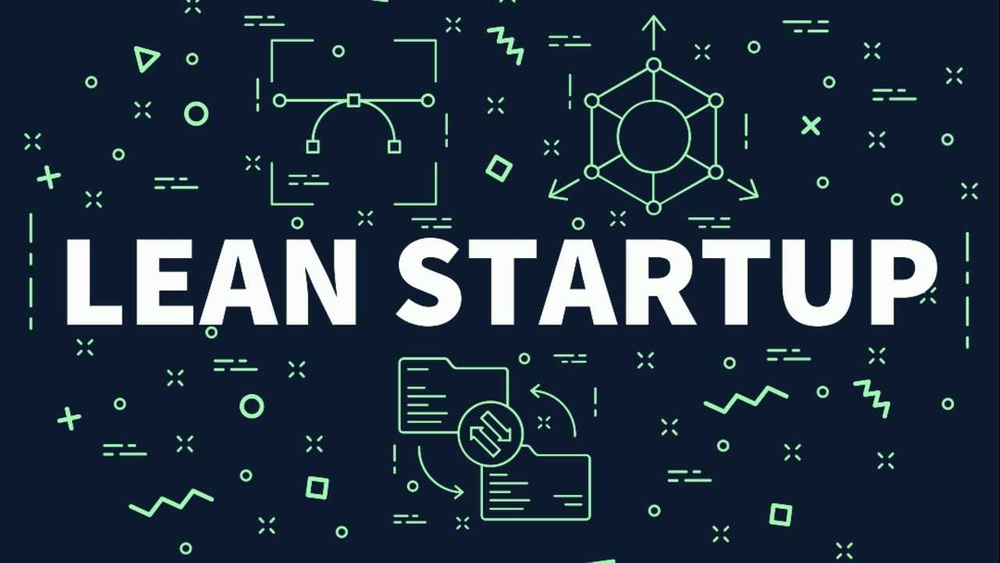The Startups Team

When startup founders hear the word “lean” in reference to business, we usually think “lean startup.” But Eric Ries wasn’t the first person to apply the word “lean” to a business philosophy. Here’s a look at what lean means, how it applies in business versus manufacturing, and a quick explanation of lean startup.
1. What is lean business?
“Lean,” at its essence, is about using fewer resources in order to provide a great product to your customers. A company that’s implementing a lean system is focusing on streamlining its systems in order to reduce waste, ideally to the point of creating no waste at all.
One big advantage of adopting a lean business model the ability to change course quickly when the needs of your customer base change. When you’re working within a lean, streamlined process, it’s possible to redirect, whereas when you’re working in a cumbersome, inefficient process, a change in customer needs or interests could put you out of business.
An example of lean versus non lean business can be seen in Blockbuster versus Netflix. While Netflix was able to transition from mail order DVD rentals to streaming services as the technology and ways that people watched movies changed, Blockbuster — a legacy business — was too entrenched in their existing, cumbersome system to make the shift when Netflix started taking a massive bite out of their business. Today, Netflix is one of the biggest media companies in the world — and Blockbuster is bankrupt.
Of course, cutting waste and streamlining processes doesn’t mean cutting the final product. A lean business is not necessarily a cheap business, although streamlining does lead to cutting costs. The focus should always be on delivering the best possible end product to the customer.
2. Difference between lean business and lean manufacturing
Way before “lean startup” became a thing, lean philosophy was applied to manufacturing. The term (at least as it applies to business) was actually created by MIT researchers in the 1980s to describe Toyota’s famous manufacturing process.
The Toyota Production System was implemented in the 1950s, as the post-World War II company faced bankruptcy, they completely transformed their manufacturing system in order to make it more efficient. They switched to a method that would later be deemed “just-in-time” manufacturing, which means they only made the number of cars that were ordered. They also created an automation system that included humans, not just machines, which further streamlined the process that Henry Ford had originated in the early 1900s.
But because Toyota is the most famous example of lean methodology and their method is really focused on manufacturing, people sometimes mistakenly believe that lean doesn’t apply to business. In fact, a huge range of businesses have made their own “lean transformations,” including ones that don’t do any manufacturing at all. A great example of this is the entire lean startup philosophy, which took over the tech world in the last decade or so.
3. What is lean startup?
Lean startup is a system for creating a business that was first introduced by entrepreneur Eric Ries in 2008 and then outlined in his 2011 book The Lean Startup: How Today’s Entrepreneurs Use Continuous Innovation to Create Radically Successful Business.
t its core, adhering to the lean startup methodology is all about creating a sustainable business with minimal waste of both time and money.
This concept grew out of two things:
Two failed businesses in Ries’ own portfolio and,
The streamlined process of creating cars that was developed in Japan after World War II.
In the case of Ries’ failures, he saw that he’d spent a lot of time and money building products, without ever confirming that those products were solving a real problem. Guess what happened?
You got it — they flopped.
In the Japanese model of building cars, which involves reducing and eliminating waste in order to get the end product to the customer at the lowest cost for highest value, Ries’ saw a system that could be applied to entrepreneurship.
As Eric puts it, “we have to change our notion of what a modern company looks like.” Disruptive innovation comes from cross-functional teams, comfort with failure, and a rigorous commitment to learning. Every company, large or small, can become a startup. Entrepreneurship is a crucial function for almost any type of organization.
Entrepreneurs that practice the lean startup methodology are encouraged to question everything — from their initial idea, to their design choices, to any features they’re considering adding.
MVP in Lean Startup
In following this process, entrepreneurs discover their minimal viable product (MVP), which Ries encourages to release to a select group of test customers to determine what improvements need to be made.
A good example of an MVP that fits within lean startup philosophy is a “smoke test site,” which can be used to validate interest in your product or service while offering a low barrier to entry.
A smoke test site is one that is just a facade. It looks like it’s a real service, but it’s really just a flat site with no back-end, nothing built out, and no real actions. They can be used easily to track and estimate demand for your business idea, and to help gather contact information for people who may be interested. The point of this site is to see if anyone tries to buy.
While the MVP is often extremely minimalistic, the feedback from the initial group of test customers helps entrepreneurs learn what’s working, understand what isn’t, and figure out what direction they should go.
Build-Measure-Learn
The general idea is that startup founders should follow the model — which Ries’ has named “build-measure-learn” — repeatedly, with the goal of turning that MVP into a sustainable business. Oftentimes, that feedback leads founders to pivot from one idea, market, or niche to another in their quest for a great product.
Innovation is a high risk sport on an idea by idea basis, but you can dramatically increase the quality and reliability of your outcomes in the way you manage new concepts.
Creating structured ideas and then figuring out creative ways to test them is central to the lean startup movement, not to mention the scientific method itself. And it turns out it’s a great way to innovative, even if you’re short on resources.
Build-measure-learn is a research-intensive process that can be emotionally fraught, as creators have to be willing to not only put their creations out into the world before they’re “finished” but also take feedback and implement it.
However, if done properly, the lean startup methodology can lead to a company that serves its client’s needs, is sustainable, and is verified before the founder even starts looking for funding. Ries’ website cites Dropbox as a prime example of a big company that used his methodology to get where they are today.
If you want to know more about lean startup, check out our full guide: What Is Lean Startup Methodology – And How Can It Help You?
Find this article helpful?
This is just a small sample! Register to unlock our in-depth courses, hundreds of video courses, and a library of playbooks and articles to grow your startup fast. Let us Let us show you!
Submission confirms agreement to our Terms of Service and Privacy Policy.
Already a member? Login
No comments yet.
Start a Membership to join the discussion.
Already a member? Login
